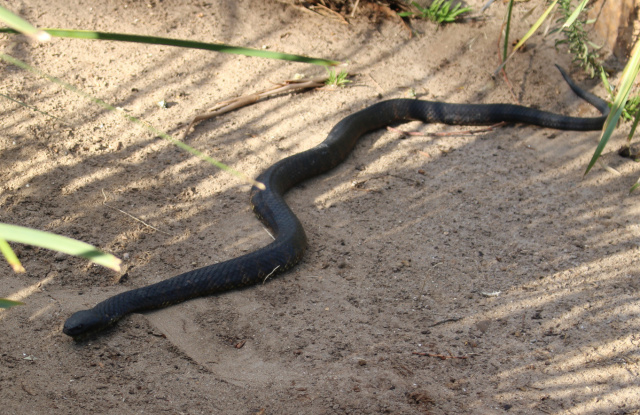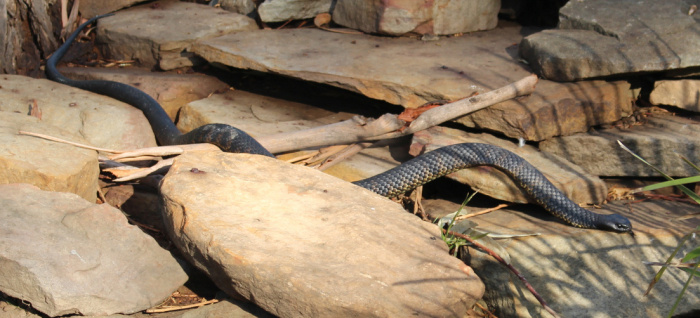Tiger Snake
The tiger snake - Tasmania's most venemous snake
The tiger snake is a highly venomous snake native to southern Australia, including Tasmania. It is named for its distinctive banded pattern, which can vary in color. Their bites can be fatal to humans, although with the right medical treatment promptly after the bite, fatalities are rare. They feed mainly on frogs, small mammals, birds, and fish.

Tiger Snake
Notechis scutatus occedentalis
Elapidae
The tiger snake is named for its distinctive banded pattern, which can vary in color from yellow and black to brown or olive. They often have a yellow, cream or white under belly.
1.9 m
Their black and brown scales, but the colours can vary.
The tiger snake is a highly venemous snake endemic to Australia. It's the most venomous snake in Tasmania.

Tiger snake in Tasmania
The tiger snake can be found in many parts of Australia but their favourite habitat is near creeks and little rivers, or sunbaking across pathways.
They mainly eat frogs but they also nibble on birds, small reptiles and small mammals.
They breed in spring and summer. Tiger snakes give birth to live youngs rather than laying eggs. They can give birth to up to 60 snakelets in one litter. In winter tiger snakes are less active.
The tiger snake is distributed across the south coast of Australia including south Queensland and NSW, Victoria and Tasmania.
Protected
Some birds like kookaburras, kites, ibises and more.
Hisses.
You can see them lounging on open bits of track or on rocks on warm and sunny days.
You might like...
Forty-spotted Pardalote
One of the world's rarest birds, the Forty-Spotted Pardalote's remaining stronghold is on Bruny Island and Maria Island, off Tasmania
Myrtle beech
The Myrtle beech, or simply 'Myrtle' is the dominant species of Tasmania's rainforests. Myrtle trees can grow up to 55m tall, and have a heart-shaped dark green leaf with a tiny serrated edge.
Black Currawong
The currawong is a bird found only in Tasmania, frequents forests, and is a glossy all-black colour with a heavy black bill, small white tip to its tail and wingtips, and bright-yellow eyes.
Newsletter
Sign up to keep in touch with articles, updates, events or news from Kuno, your platform for nature
